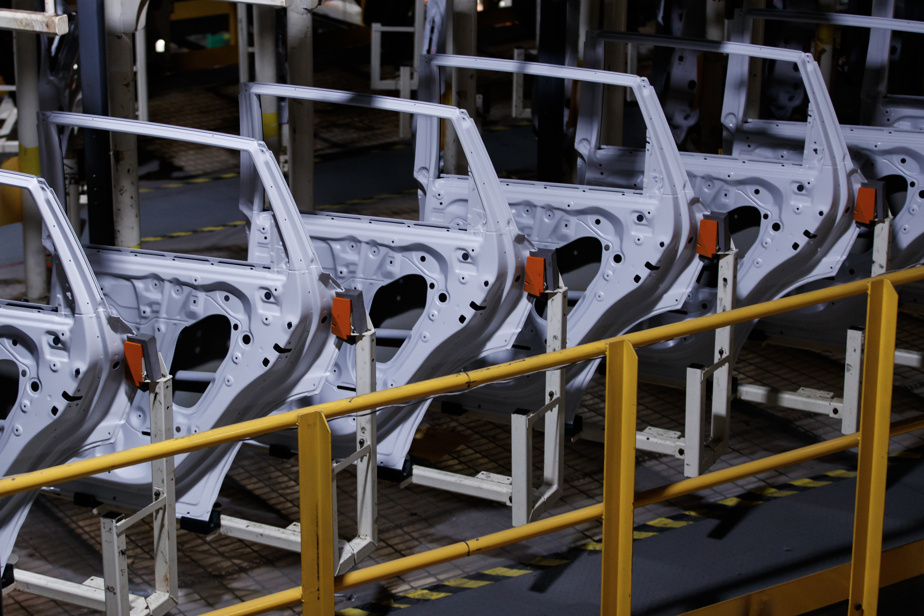Quebec’s offer to obtain part of Honda’s investment in the battery sector was a few hundred million lower than that of Ontario, we have learned The Press. It is also in this province that the Japanese giant will make a titanic investment – with the support of governments.
What there is to know :
- Honda is expected to make an electrification investment of approximately $15 billion in Ontario.
- Quebec wanted to obtain part of the project: the manufacturing of cathodes – the positive pole of a lithium-ion battery.
- His proposal was a few hundred million lower than Ontario’s.
Electric vehicle assembly plant in Alliston, battery manufacturing complex and production of cathode materials as well as separators: the Japanese automaker’s electrification ambitions will be revealed later this week – probably this Thursday – and are expected to oscillate at around 15 billion.
The Legault government, which wanted to get its share of the pie, coveted the cathodes component, which represents approximately 40% of the cost of a lithium-ion battery found in electric vehicles. This is the positive pole of a battery.
“We tried to attract them, but there was a financial limit to which we were prepared to go to convince them,” says a government source familiar with the matter, but who is not authorized to speak publicly.
According to our information, the gap between what was put in by Quebec and Ontario for the Honda cathode plant would reach several hundred million. At the time of writing, it was not possible to obtain further details. Last March, The Press had reported the particularly high financial demands of the multinational based in Tokyo.
More modest means
The Legault government had been discussing with Honda for several months. The name of the automobile manufacturer has appeared in the Quebec register of lobbyists since last summer in connection with the “electric vehicle sector”. Quebec wanted to attract Honda to the Bécancour industrial park, where General Motors (GM) and Ford are currently building cathode materials factories.
In a budgetary context marked by a record deficit in Quebec (11 billion), it was more difficult to reproduce financial aid as generous as in the past. For the Quebec Ford factory, the Legault government had offered 320 million in the form of an interest-free loan, a good part of which risks being transformed into a forgivable loan. In the case of GM, aid from Quebec reaches 152 million.

PHOTO EDOUARD PLANTE-FRÉCHETTE, LA PRESSE ARCHIVES
Peter Fitzgibbon
Last Tuesday, during the study of the budgetary appropriations of the Ministry of the Economy, Innovation and Energy, Minister Pierre Fitzgibbon suggested that Quebec’s approach risked changing over time. place of the battery sector, which represents 16 billion in projects announced so far.
“It could stop at 16 [milliards]but I believe that it will go to 20 billion and there we will possibly start to be more rigorous on the [soutien] financial due to the fact that after having built our notoriety, we will be able to be less generous. »
Much more than Volkswagen
Ontario Premier Doug Ford himself confirmed Honda’s electrification investment. As part of a First Nations conference, Mr. Ford indicated that an announcement was imminent.
“This week we reached a new agreement and it will be the most important in Canadian history,” said Mr. Ford. It will be twice as large as that of Volkswagen. Stay tuned, we will announce it this week. »

PHOTO NATHAN DENETTE, CANADIAN PRESS ARCHIVES
Doug Ford, Premier of Ontario
The Volkswagen plant, to be built in St. Thomas, Ontario, is expected to cost around $7 billion.
It remains to be seen how much financial support will be offered to Honda by Queen’s Park and Ottawa. Volkswagen and Stellantis were entitled to billions of dollars in production subsidies for their battery factories, since the Trudeau government wanted to avoid being outplayed by theInflation Reduction Act (IRA) American. The same mechanism had been deployed in Quebec with the battery cell manufacturer Northvolt.
Everything indicates that assistance to Honda will be provided through more traditional means, such as loans and tax credits. Tabled last week, Federal Finance Minister Chrystia Freeland’s budget announced a 10% tax credit for investment in the electric vehicle supply chain.
This measure concerns the cost of buildings related to the production of electric vehicles, provided that the company invests in assembly, battery production and the production of active cathode materials in Canada – which Honda is preparing to do .
Added to this is a 30% tax credit for investment in clean technology manufacturing on the cost of new machinery and equipment.
With the collaboration of Francis Vailles, The Pressand The Canadian Press
Learn more
-
- 3
- Battery factories to be built in Ontario with Honda in mind.
Source: the press
